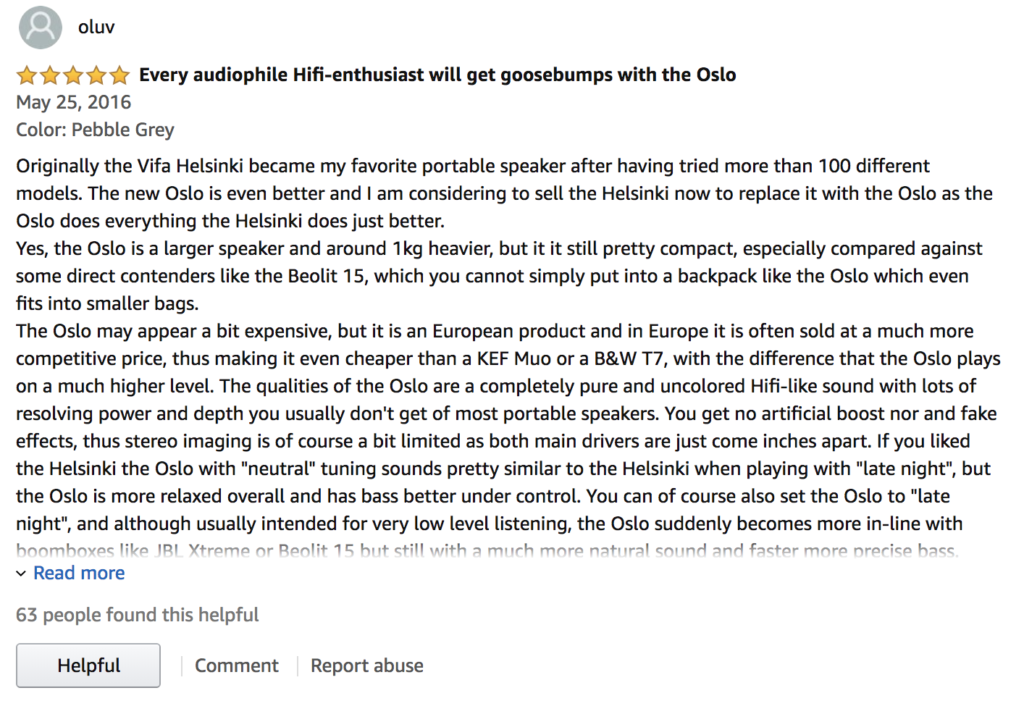In this second part of our series about Customer Reviews and Seller Feedback, we will discuss whether all amazon reviews are worth the same. Here, we are not concerned with 5-star reviews being obviously better than 1-star reviews. Rather, we’ll discuss some of the other factors influencing the Amazon algorithm.
Keep reading to find out how many reviews you need, who should write them, and how long they need to be. We will also touch on some of the things that customers consider when reading reviews.
A good rule of thumb is that you need 15 reviews to reach your first ‘tipping point’ before your ranking on Amazon can improve. When you’ve gathered the first 15 reviews, your next target is 50 reviews. You need an average rating of 4,5 stars to reach a top ranking and win the Buy Box.
Like most things, Amazon doesn’t have an official threshold for the number of reviews you need to improve your ranking. The numbers 15 and 50 are based on research made by Amazon partners but keep in mind that some product categories need more reviews than others. As a ground rule, more generic products with many potential sellers require more reviews.
Even if long, quality reviews are good for your brand, it is definitely not a bad thing to have a mix of both short and long reviews on your product page. From a customer point of view, your product reviews might look staged, if the majority are long and detailed. This can hurt your trustworthiness as a seller.

There is a lot of speculation on which reviewers are the best (if any). Similar to other platforms like Yelp and IMDb (which are also owned by Amazon), where reviews are a key element of the site, Amazon issues a guarantee on reliable reviewers.
Maybe you’ve noticed that under each Customer Review, users have the option to tell Amazon whether they found the review helpful or not. When a customer consistently writes reviews which are deemed relevant and helpful, their rank will increase. Similarly, comments which are rated ‘helpful’ will be placed at the top of the product page.
It is an advantage if you can get your good reviews to place at the top – especially if written by reliable reviewers. That being said, it is not something you have direct control over, but back in the day, you could use this trick to hide bad reviews.
Today, Amazon will show the # 1 helpful good and bad review. This makes it even more important that the positive review lands in the top spot. According to Amazons community guidelines you are not allowed to ask friends and family to review products, but the guidelines are less clear regarding who is allowed to rate reviews. It is a gray area to ask people to click ‘helpful’ on certain reviews, but the option is there.
Customers who write reviews have more to gain than simply helping others. As a Top Reviewer, you get the opportunity to participate in different ‘Review Clubs’, where you can get major discounts and free products. To see a list of the Top Customer Reviewers in the UK, click here.
It’s possible to get customers to review your products even if they haven’t bought them on Amazon ex. they might have bought a product on your personal webshop, and you follow up with an email encouraging them to write a review on Amazon. This is allowed according to Amazon guidelines, but these reviews don’t carry the same weight as Verified Purchase reviews.
In their guidelines, Amazon writes as follows: “Reviews that are not marked “Amazon Verified Purchase” are valuable as well, but we either can’t confirm that the product was purchased at Amazon or the customer did not pay a price available to most Amazon shoppers.”
Amazon was still in its infancy when Jeff Bezos, or ‘Jeff’, as he is known in our office, proclaimed that his mission was about more than selling products – he wanted to help people make better decisions. As mentioned, customer reviews are a familiar concept on many websites, especially those facilitating peer-to-peer or third-party sales: Uber, Yelp, TrustPilot, Tripadvisor, Just-Eat, AirBnb and many many more.
But Amazon was the first to establish this new level of transparency where customers can read reviews directly on their interface.
According to a 2018 survey most online consumers spend time reading reviews before they make a purchase. For consumers between the ages of 18-34, the number is as high as 95%. The same group also answered that they trust online reviews as much as personal recommendations. On average, customers read 10 reviews before placing an order. That is why it is important to gather a significant number of reviews on your product page, so each customer has a wide selection of opinions to consider before purchasing.

The future is on Amazon

Copyright © 2023 be-ahead